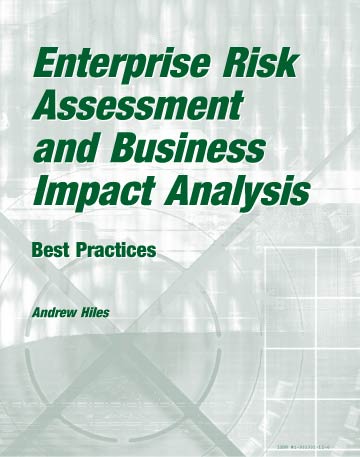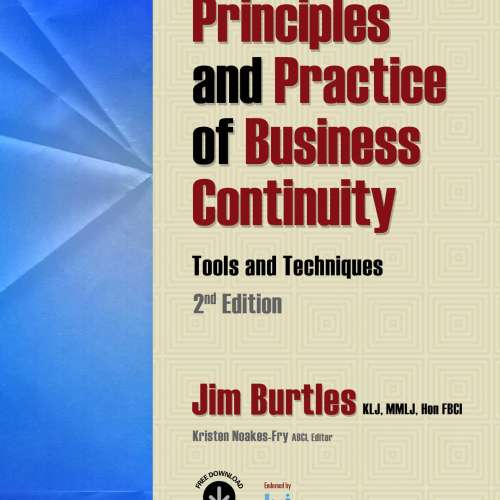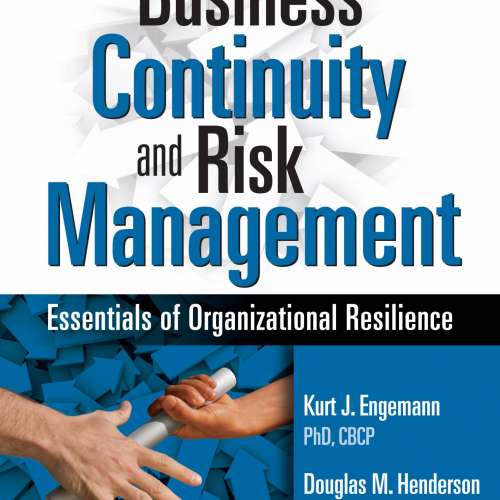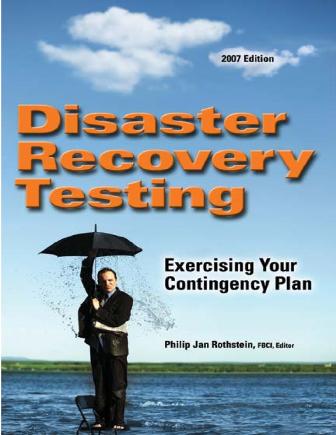Contents
PREFACE……………………………………………………………………………………………………………………………………………………. 13
Foreword……………………………………………………………………………………………………………………………………………………… 17
How To Use This Book……………………………………………………………………………………………………………………………….. 19
Section One: Introduction………………………………………………………………………………………………………………………….. 21
1.1 What is Risk Management?…………………………………………………………………………………………………………… 21
1.2 Why Risk Management…………………………………………………………………………………………………………………. 22
1.3 Why This Book?……………………………………………………………………………………………………………………………. 23
1.4 Risk Management and Quality………………………………………………………………………………………………………. 24
Category 1 Leadership…………………………………………………………………………………………………………………………. 24
Category 2 Business Information Management & Analysis…………………………………………………………………. 25
Category 3. Business Planning……………………………………………………………………………………………………………… 26
Category 4. Human Resource Development and Management…………………………………………………………….. 26
Category 5. Process Management…………………………………………………………………………………………………………. 26
Category 6. Customer and Market Focus……………………………………………………………………………………………… 27
Category 7. Business Results……………………………………………………………………………………………………………….. 28
1.5 The Importance of Business Leadership……………………………………………………………………………………….. 28
1.6 Enterprise Risk Management………………………………………………………………………………………………………… 28
Section Two: Risk Evaluation & Control………………………………………………………………………………………………….. 31
2.0 Introduction………………………………………………………………………………………………………………………………………… 31
2.1 DRII/ BCI Unit 2…………………………………………………………………………………………………………………………… 31
2.2 Definitions: Hazards, Threats, Risks and Assets…………………………………………………………………………… 32
2.3 Risk Assessment – The Need………………………………………………………………………………………………………… 32
2.4 System Safety Programs and HAZOP……………………………………………………………………………………………… 33
2.5 Health & Safety – Risk Assessment………………………………………………………………………………………………. 34
2.6 Control of Major Accident Hazards Regulations 1999 (COMAH)……………………………………………….. 35
2.7 Risk Management for Finance and the Finance Sector – Compliance Issues………………………………… 36
2.8 Gramm-Leach-Bliley Reports……………………………………………………………………………………………………….. 39
2.9 Food and Drugs Administration (FDA) Compliance…………………………………………………………………….. 39
2.10 Risk Assessment in the Food Industry…………………………………………………………………………………………… 40
2.11: Health Care………………………………………………………………………………………………………………………………………. 40
2.12 Risk Assessment in Other Industries……………………………………………………………………………………………… 40
Table 2.1 Risk Guidance and Compliance…………………………………………………………………………………………….. 41
2.13 Risk Assessment: Statutory Requirement and Duty of Care…………………………………………………………. 42
2.14 Project Risk…………………………………………………………………………………………………………………………………… 43
2.14.1 Project Risk Factors……………………………………………………………………………………………………………………. 43
Figure 2.1: The Project in Context……………………………………………………………………………………………………….. 46
2.14.2 Project Management Organization Structure……………………………………………………………………………… 47
2.14.3 Project Roles……………………………………………………………………………………………………………………………… 48
2.14.4 Project Management Methodology……………………………………………………………………………………………. 51
Figure 2.2: Example of Project Management Methodology…………………………………………………………………. 51
2.14.5: Why Projects Fail……………………………………………………………………………………………………………………… 52
Figure 2.3: Causes of Project Failure…………………………………………………………………………………………………… 52
2.15 Example of Risk Assessment Guidelines: The Turnbull Report……………………………………………………. 53
2.15.1 What is Turnbull? Why?……………………………………………………………………………………………………………. 53
2.15.2 The Turnbull Process…………………………………………………………………………………………………………………. 54
2.15.3 Making Progress……………………………………………………………………………………………………………………….. 54
2.16 Risk Requirements in Germany…………………………………………………………………………………………………….. 55
2.17 Risk Assessment – The Process…………………………………………………………………………………………………….. 55
Figure 2.4 Schematic of Risk Assessment Process………………………………………………………………………………… 56
2.18 Options for Risk Management…………………………………………………………………………………………………… 57
2.19 The Turnbull Approach to Risk Assessment…………………………………………………………………………………. 57
2.20 Critical Component Failure Analysis……………………………………………………………………………………………. 58
2.21 A Swedish Approach………………………………………………………………………………………………………………………… 59
2.22 Operational Risk Management………………………………………………………………………………………………………. 62
2.23 An Output Approach to Risk…………………………………………………………………………………………………………. 63
2.23 Security and Siting – Risk Areas…………………………………………………………………………………………………… 63
2.26 Supplier and Outsourcing Risk……………………………………………………………………………………………………… 65
2.26.1 The Increasing Supply-Side Risk……………………………………………………………………………………………….. 65
2.26.2 Outsourcing Issues……………………………………………………………………………………………………………………… 66
2.26.3 Getting Outsourcing Right…………………………………………………………………………………………………………. 67
2.26.4 The Importance of Service Level Agreements………………………………………………………………………. 68
2.26.5 Vendor Evaluation Criteria……………………………………………………………………………………………………. 69
2.26.6 Relating Contract Type to Service……………………………………………………………………………………………… 70
Figure 2.5 Contract Relationships………………………………………………………………………………………………………… 71
2.26.7 Lessons from Experience……………………………………………………………………………………………………………. 71
2.28 Condition Assessment & Financial Condition Assessment…………………………………………………………… 73
2.28.1 What is Condition Assessment?…………………………………………………………………………………………….. 73
2.28.2 Financial Risk Assessment in the Insurance Industry……………………………………………………………. 73
2.29 US Banks: Risk-Based Assessment System……………………………………………………………………………………… 76
2.30 Causes of Business Interruption…………………………………………………………………………………………………….. 76
Figure 2.6: Analysis of Business Interruptions……………………………………………………………………………………… 77
2.31 Automating Risk Management……………………………………………………………………………………………………… 77
2.32 Summary……………………………………………………………………………………………………………………………………….. 78
Appendix A to Section Two: Possible Threats………………………………………………………………………………………….. 79
Appendix B to Section Two: Example of a Simple Risk Analysis…………………………………………………………… 82
Appendix C to Section Two: Example Health & Safety Risk Checklist…………………………………………………. 96
Appendix D to Section Two: The E-Bomb – The New Threat……………………………………………………………….. 105
What is an E-Bomb?……………………………………………………………………………………………………………………………….. 105
History…………………………………………………………………………………………………………………………………………………….. 106
The Technology………………………………………………………………………………………………………………………………………. 107
Defense Against E-Bombs………………………………………………………………………………………………………………………. 108
References……………………………………………………………………………………………………………………………………………….. 109
Appendix E to Section Two: Theft…………………………………………………………………………………………………………… 110
Introduction…………………………………………………………………………………………………………………………………………….. 110
The Cost of Theft…………………………………………………………………………………………………………………………………….. 110
The Impact of Theft………………………………………………………………………………………………………………………………… 111
Summary…………………………………………………………………………………………………………………………………………………. 111
Appendix F to Section Two: Risk Analysis in IT Projects…………………………………………………………………….. 112
Background……………………………………………………………………………………………………………………………………………… 112
Controlling Projects: Development…………………………………………………………………………………………………………. 113
Lessons from Experience………………………………………………………………………………………………………………………… 114
Annex 1 to Appendix F: IT Project Risk Assessment…………………………………………………………………………….. 116
Symptom of High Risk………………………………………………………………………………………………………………………. 116
Appendix G to Section Two: Infrastructure Project Risk Management Framework…………………………. 118
Introduction…………………………………………………………………………………………………………………………………………….. 118
Method……………………………………………………………………………………………………………………………………………………. 120
Market Comparisons……………………………………………………………………………………………………………………………….. 121
Risk Management Approaches……………………………………………………………………………………………………………….. 123
Risk Management & Business Continuity Strategy………………………………………………………………………………… 124
Infrastructure Project Risks…………………………………………………………………………………………………………………….. 124
Risk types………………………………………………………………………………………………………………………………………………… 125
Figure 1: Basic Risk Matrix……………………………………………………………………………………………………………….. 126
Multiple dimensions of Risk Matrix……………………………………………………………………………………………………….. 128
Figure 2: Risk Matrix………………………………………………………………………………………………………………………….. 128
The Framework……………………………………………………………………………………………………………………………………….. 129
Figure 3: Framework………………………………………………………………………………………………………………………….. 129
Conclusion………………………………………………………………………………………………………………………………………………. 131
The Way Forward……………………………………………………………………………………………………………………………………. 131
Annex 1 to Appendix G: Example High Level Risks for an Infrastructure Project………………………………… 133
Annex 2 to Appendix G: A Major Infrastructure Company Approach……………………………………………………. 135
Figure 4: Risk Process Flow……………………………………………………………………………………………………………….. 137
Appendix H to Section Two: Cost Items to Consider in Financial Authority……………………………………… 138
Equipment etc…………………………………………………………………………………………………………………………………… 138
Documentation / manuals……………………………………………………………………………………………………………….. 139
Staff Costs…………………………………………………………………………………………………………………………………………. 139
Contractors………………………………………………………………………………………………………………………………………… 139
Travel and subsistence…………………………………………………………………………………………………………………….. 139
Environmental Costs………………………………………………………………………………………………………………………… 139
Risk Management…………………………………………………………………………………………………………………………….. 140
Insurance……………………………………………………………………………………………………………………………………………. 140
Cost of off-site storage…………………………………………………………………………………………………………………….. 140
Ongoing Costs………………………………………………………………………………………………………………………………….. 140
Finance Option…………………………………………………………………………………………………………………………………. 141
Write off of items to be disposed of………………………………………………………………………………………………. 141
Is the depreciation period of the project reasonable?………………………………………………………………….. 141
Project Costs for:……………………………………………………………………………………………………………………………… 141
Appendix I to Section Two: Example of a Risk Management Database………………………………………………. 142
Introduction…………………………………………………………………………………………………………………………………………….. 142
Possible Requirements…………………………………………………………………………………………………………………………….. 142
Appendix J to Section Two: Example Assets………………………………………………………………………………………….. 146
Appendix J to Section Two: Example Assets………………………………………………………………………………………….. 147
Appendix K to Section Two: Murphy Rules!………………………………………………………………………………………….. 149
Section Three: Business Impact Analysis………………………………………………………………………………………………… 151
3.1 DRII/BCI Unit 3………………………………………………………………………………………………………………………….. 151
3.2 What is BIA?……………………………………………………………………………………………………………………………….. 152
3.3 The BIA Project…………………………………………………………………………………………………………………………… 152
3.4 BIA Data Collection Methods…………………………………………………………………………………………………….. 153
3.5 Critical Success Factors: Definitions…………………………………………………………………………………………… 154
Figure 3.1: Critical Success Factor / Business Process Matrix………………………………………………………….. 156
3.6 Key Performance Indicators………………………………………………………………………………………………………… 157
3.7 Process Flows……………………………………………………………………………………………………………………………… 157
3.8 Outputs & Deliverables……………………………………………………………………………………………………………….. 158
3.9 Activity Categorization……………………………………………………………………………………………………………….. 158
3.10 Desk Review of Documentation………………………………………………………………………………………………….. 158
3.11 Questionnaires…………………………………………………………………………………………………………………………. 159
3.12 Interviews……………………………………………………………………………………………………………………………………. 162
Figure 3.2: Summary of BIA Interview Data………………………………………………………………………………………. 164
3.13 Workshops………………………………………………………………………………………………………………………………. 165
3.14 Observation…………………………………………………………………………………………………………………………………. 165
3.15 Business Impact Analysis – Financial Justification for BCM……………………………………………………… 165
3.16 Grounds for Justification…………………………………………………………………………………………………………. 166
3.17 Life and Safety…………………………………………………………………………………………………………………………….. 166
3.18 Marketing……………………………………………………………………………………………………………………………………. 166
3.19 Financial……………………………………………………………………………………………………………………………………… 168
Figure 3.3 Average Normalized Share price Variation % Following a Disaster……………………………….. 169
3.20 Compliance / Legal Requirements………………………………………………………………………………………………. 170
3.21 Quality…………………………………………………………………………………………………………………………………….. 171
3.22 Summary: Financial Loss……………………………………………………………………………………………………………. 171
Table 3.1: Cost of Disaster – Causes………………………………………………………………………………………………….. 172
3.23 Designing an Impact Matrix………………………………………………………………………………………………………… 173
Table 3.2: Simplified Impact Analysis…………………………………………………………………………………………………. 175
Premises………………………………………………………………………………………………………………………………………………. 175
3.24 Time Window for Recovery………………………………………………………………………………………………………… 176
Figure 3.4: Risks and Outage……………………………………………………………………………………………………………… 177
Figure 3.5: Time Window for Recovery………………………………………………………………………………………………. 177
3.25 Resource Requirements……………………………………………………………………………………………………………….. 179
Figure 3.6: Effect of Coincident Workload Peaks………………………………………………………………………………. 179
Figure 3.7 The Backlog Build-up………………………………………………………………………………………………………… 180
3.26 Summary…………………………………………………………………………………………………………………………………………. 181
Appendix A to Section Three: Resource & Timescale for Provisioning……………………………………………….. 182
Appendix B to Section Three: Example of Risk & Impact Analysis…………………………………………………….. 184
Background……………………………………………………………………………………………………………………………………………… 184
Risk Description………………………………………………………………………………………………………………………………….. 184
Appendix C to Section Three: Marketing Protection…………………………………………………………………………….. 188
Introduction…………………………………………………………………………………………………………………………………………….. 188
What is Marketing Protection?………………………………………………………………………………………………………………… 189
Brand Value…………………………………………………………………………………………………………………………………………….. 189
The World’s Top Ten Brands………………………………………………………………………………………………………………. 191
Advertising and Marketing……………………………………………………………………………………………………………………… 192
The Halo Effect……………………………………………………………………………………………………………………………………….. 194
The Downside of Advertising…………………………………………………………………………………………………………………. 194
Risk Management Spend in a Marketing Context…………………………………………………………………………………… 196
Summary…………………………………………………………………………………………………………………………………………………. 196
Appendix D to Section Three: The Cost of Lost Data……………………………………………………………………………. 197
The Background………………………………………………………………………………………………………………………………………. 197
The Cost………………………………………………………………………………………………………………………………………………….. 198
The Implications……………………………………………………………………………………………………………………………………… 198
Statistics………………………………………………………………………………………………………………………………………………….. 199
Summary…………………………………………………………………………………………………………………………………………………. 199
Appendix E to Section Three:………………………………………………………………………………………………………………….. 200
e-Commerce Risk and Impact………………………………………………………………………………………………………………….. 200
Business Risk and e-Commerce………………………………………………………………………………………………………………. 200
Table 1: Cost of Downtime…………………………………………………………………………………………………………………. 202
How IT Projects are Changing………………………………………………………………………………………………………………… 203
Risk Management Principles: Working with e-Commerce Projects……………………………………………………….. 204
The Balance Between Speed and Risk: Solutions…………………………………………………………………………………… 205
Summary…………………………………………………………………………………………………………………………………………………. 207
Appendix F to Section Two: Background Information for BIA……………………………………………………………. 209
Information Requirements………………………………………………………………………………………………………………………. 209
General……………………………………………………………………………………………………………………………………………………. 209
Procedures and Standards……………………………………………………………………………………………………………………….. 210
Risk Management and Insurance…………………………………………………………………………………………………………….. 210
Contracts and Licences……………………………………………………………………………………………………………………………. 210
Technical Documentation……………………………………………………………………………………………………………………….. 211
Section Four: Risk & Continuity Theory & Strategies………………………………………………………………………….. 213
4.1 Introduction…………………………………………………………………………………………………………………………………. 213
4.2 Valuation of Risk and Flexibility………………………………………………………………………………………………… 214
Risk……………………………………………………………………………………………………………………………………………………… 214
Flexibility……………………………………………………………………………………………………………………………………………. 214
4.3 Techniques for Valuing Risk and Flexibility………………………………………………………………………………. 215
4.4 Stochastic Processes………………………………………………………………………………………………………………………….. 216
4.5 General Risk Theory…………………………………………………………………………………………………………………………. 217
4.6 Investment Risk……………………………………………………………………………………………………………………………….. 217
4.7 Random Finite Abstract Sets (RFAS) Theory………………………………………………………………………………….. 218
4.8 Sensitivity Analysis…………………………………………………………………………………………………………………….. 218
4.9 Quantitative Risk Analysis………………………………………………………………………………………………………………… 218
4.10 Qualitative Risk Analysis……………………………………………………………………………………………………………….. 219
4.11 Boolean Simulation……………………………………………………………………………………………………………………… 219
4.12 Bayes Theorem……………………………………………………………………………………………………………………………….. 220
4.13 Monte Carlo Simulation………………………………………………………………………………………………………………. 220
Figure 4.1: Example of Monte Carlo Model……………………………………………………………………………………….. 222
Table 4.2: Contacts for Monte Carlo Analysis Tools………………………………………………………………………….. 223
4.14 Decision Tree Analysis……………………………………………………………………………………………………………….. 223
Figure 4.3 Example of Decision Tree Analysis…………………………………………………………………………………… 225
4.15 Dependency Modelling……………………………………………………………………………………………………………….. 226
4.16 Computer Risk Assessment and Management Methodology (CRAMM)……………………………………. 228
Figure 4.4: CRAMM Principles.…………………………………………………………………………………………………………. 229
4.17 Value at Risk……………………………………………………………………………………………………………………………….. 230
4.18 Risk Methods and Techniques: Conclusion………………………………………………………………………………… 231
4.19 Recovery Strategies…………………………………………………………………………………………………………………….. 231
4.20 Recovery Strategies: Summary……………………………………………………………………………………………………. 236
Section Five: A Brief Guide to Insurance……………………………………………………………………………………………….. 237
5.1 Introduction…………………………………………………………………………………………………………………………………. 237
5.2 Insurance Issues……………………………………………………………………………………………………………………………….. 237
5.3 Insurance Definitions…………………………………………………………………………………………………………………… 238
5.4 Self-Insurance……………………………………………………………………………………………………………………………… 239
5.5 Asset Value…………………………………………………………………………………………………………………………………. 239
5.6 Insurance Cover…………………………………………………………………………………………………………………………… 240
5.7 Losses and Events……………………………………………………………………………………………………………………………… 242
5.8 Proof of Loss…………………………………………………………………………………………………………………………………….. 243
5.9 Indemnity Period…………………………………………………………………………………………………………………………. 244
5.10 Insurance Relationships………………………………………………………………………………………………………………. 244
Figure 5.1 Insurance Relationships…………………………………………………………………………………………………….. 245
5.11 Summary…………………………………………………………………………………………………………………………………. 245
Section Six: Writing the Risk Assessment & Business Impact Analysis Report………………………………….. 247
6.1 Introduction…………………………………………………………………………………………………………………………………. 247
6.2 The Report: Typography and Layout…………………………………………………………………………………………… 249
6.3 Document Format……………………………………………………………………………………………………………………….. 249
6.4 Revision and Editing…………………………………………………………………………………………………………………… 252
6.5 The Presentation………………………………………………………………………………………………………………………….. 253
6.6 Summary……………………………………………………………………………………………………………………………………… 253
Section Seven: Sources of Help………………………………………………………………………………………………………………… 255
7.1 Introduction…………………………………………………………………………………………………………………………………. 255
7.2 Checklists……………………………………………………………………………………………………………………………………. 256
Associations………………………………………………………………………………………………………………………………………… 257
Banking Risk Management…………………………………………………………………………………………………………………. 257
Farm Succession…………………………………………………………………………………………………………………………………. 258
Lightning…………………………………………………………………………………………………………………………………………….. 258
Market Risk Management…………………………………………………………………………………………………………………… 258
Project Management Checklist……………………………………………………………………………………………………………. 259
Site Selection………………………………………………………………………………………………………………………………………. 259
7.3 Associations………………………………………………………………………………………………………………………………… 259
American Risk and Insurance Association………………………………………………………………………………………….. 259
The Association of Insurance and Risk Managers………………………………………………………………………………. 259
Australian Institute of Risk Management……………………………………………………………………………………………. 260
The Business Continuity Institute……………………………………………………………………………………………………….. 260
Risk Assessment & Policy Association………………………………………………………………………………………………. 260
Risk and Insurance Management Society, Inc…………………………………………………………………………………….. 260
The Society for Risk Analysis (SRA)…………………………………………………………………………………………………. 261
The Society for Judgment and Decision Making………………………………………………………………………………… 261
7.4 Web Sites…………………………………………………………………………………………………………………………………….. 261
Federal Emergency Management Agency (FEMA)……………………………………………………………………………. 261
Dependency Modeling………………………………………………………………………………………………………………………… 263
International Risk Management Institute…………………………………………………………………………………………….. 263
International Institute of Risk and Safety Management………………………………………………………………………. 263
Institute for Crisis, Disaster, And Risk Management………………………………………………………………………….. 263
The Institute of Risk Management………………………………………………………………………………………………………. 263
IRMA………………………………………………………………………………………………………………………………………………….. 264
Project Management Institute Risk Management Special Interest Group…………………………………………… 264
RiskWorld…………………………………………………………………………………………………………………………………………… 264
RISKANAL Discussion Group…………………………………………………………………………………………………………… 264
Statistics………………………………………………………………………………………………………………………………………………. 265
Survive………………………………………………………………………………………………………………………………………………… 265
Summit Systems, Inc…………………………………………………………………………………………………………………………… 265
7.5 Processing and Collating Information…………………………………………………………………………………………. 265
7.6: Summary………………………………………………………………………………………………………………………………………….. 266
Section Eight: Risk Assessment & Management & Dependency Modelling Tools……………………………… 267
8.1 Tools: Introduction……………………………………………………………………………………………………………………… 267
8.2 Tools: Examples………………………………………………………………………………………………………………………….. 267
Assessing Risk – Internal Audit Tool Kit……………………………………………………………………………………………. 268
The BUDDY SYSTEM………………………………………………………………………………………………………………………. 268
CAMEO………………………………………………………………………………………………………………………………………………. 269
CORA (Cost of Risk Analysis)…………………………………………………………………………………………………………… 269
Crystal Ball®………………………………………………………………………………………………………………………………………. 269
DATA Decision Tree software……………………………………………………………………………………………………………. 270
Defender……………………………………………………………………………………………………………………………………………… 270
designsafe……………………………………………………………………………………………………………………………………………. 271
HealthCalc Network……………………………………………………………………………………………………………………………. 271
iDecide………………………………………………………………………………………………………………………………………………… 271
Orbit……………………………………………………………………………………………………………………………………………………. 271
PetroVR………………………………………………………………………………………………………………………………………………. 272
REALBIZ……………………………………………………………………………………………………………………………………………. 272
RI$K……………………………………………………………………………………………………………………………………………………. 272
Risk Alert……………………………………………………………………………………………………………………………………………. 273
Risk Assessment Software and Consulting…………………………………………………………………………………………. 273
RISKMASTER……………………………………………………………………………………………………………………………………. 273
RiskFolio…………………………………………………………………………………………………………………………………………….. 273
Risk+…………………………………………………………………………………………………………………………………………………… 274
TRIMS………………………………………………………………………………………………………………………………………………… 274
Acknowledgements……………………………………………………………………………………………………………………………………. 276
Bibliography………………………………………………………………………………………………………………………………………………. 277
About the Author………………………………………………………………………………………………………………………………………. 281
About The Publisher…………………………………………………………………………………………………………………………………. 282
Preface by Melvyn Musson
Risk Analysis and Business Impact Assessment is an area of Business Continuity Management that evokes a lot of discussion and misunderstandings.
For many years, Andrew Hiles and Philip Jan Rothstein have talked about the need for a detailed book on this subject. Finally, their collaboration is meeting that need.
Several years ago, I was an integral part of the group that developed the Common Body of Knowledge that was ultimately adopted jointly by the Disaster Recovery Institute International (DRII) and Business Continuity Institute (BCI). Subject Areas 2 and 3 of their Professional Practices deal specifically with Risk Analysis and Business Impact Assessment. This book relates directly to those sections as well as to Section 3-3: Hazard Identification and Risk Assessment in the National Fire Protection Association (NFPA) 1600 Standard on Disaster/Emergency Management and Business Continuity Programs.
When I was asked to write this Preface, I did not anticipate any problems in accomplishing that task. However, I must admit that the exercise turned out to be more difficult than I had anticipated. The major problem was that the tragic events of September 11th, 2001, including the destruction of the World Trade Center and the cascading impact on not only Manhattan but the entire world, caused me to think, along with many other business continuity practitioners, whether any risk or business impact assessment could have anticipated such an incident and its impact. If it could not, then why should we bother to conduct such an analysis?
I have heard others questioning the need for such an analysis. Having thought about this for some time, I am firmly convinced that the need remains as much as ever. While I certainly would not want to second-guess any analysis conducted prior to September 11th, I do believe we need to learn the harsh lessons from that event that apply to both Risk Analysis and Business Impact Assessment.
The basic lesson for business continuity professionals is: anything could happen. The local impact could be catastrophic, and the cascade effect could be overwhelming. Is that really any different from what business continuity practitioners have always preached? Probably not, but it was often something that was not appreciated by senior management. Now, regrettably, we have the evidence to support this lesson.
Perhaps the problem was not that people refused to believe that such catastrophic events could occur – after all, we have experienced other, recent catastrophic events such as earthquakes in the USA (Northridge), Taiwan and Turkey. Maybe it was more the case that the appropriate information and evidence was not developed and presented in a way that made it truly believable.
I hear a lot of talk about worst-case scenarios, and that cold be part of this problem. Many business continuity practitioners concentrate on the worst case as a single event, but then the question becomes, “is that really the true worst-case scenario?” Or, because a single event is being considered, perhaps it is not extrapolated to the full extent, since to take it that far might strain its credibility.
If a range of scenarios are used from the most likely in both type of incident and impact, through to the absolutely worst case, you can build for senior management a better and more believable understanding of what can happen.
The other aspect in connection with risk analysis and worst-case scenarios is to make sure that you have the in-depth information necessary to support your points on what could happen. Too often, that in-depth aspect is missing and does not support the Risk Analysis findings.
Another possible problem I often hear is constant reference to financial impact. While financial impact is important, it is not the only impact which must be considered. There are several others, such as public credibility, legal and regulatory issues, or credibility within the financial community, all of which should also be addressed. Many of these impacts will be difficult, if not impossible to quantify. This means that such impacts need to be qualified rather than quantified.
The purpose of a Business Impact Assessment is to provide information for both decision-making and for incorporation into the business continuity plan. Spending considerable time on quantification of impacts when qualified impacts would be just as appropriate and useful, can not only delay the development of the business continuity plan, but can also reduce the planner=s credibility with management and possibly the effectiveness of the business continuity plan.
Not only is a Business Impact Assessment a means for prioritizing functions, but also the means to identify the resources that are needed to support the functions and the priority order in which these resources should be provided. Resources range from space, people and equipment to outside services and utilities. Identification of such resources requires focusing not only on the details of the business production or service functions but also looking at the big picture of what is used outside the immediate area of such functions. Hence the need to pay just as much attention to such aspects as the supply chain, outside utilities and even the demographics and travel routes of the company staff.
This is also where the Risk Analysis and Business Impact Assessment are linked. Remember the basic premise of the Risk Analysis and Business Impact Assessment: what can happen, what will be affected, and what are the resultant effects and impact?
Having identified through the BIA the resources that will be necessary, it is then of the utmost importance to identify what could prevent the provision of these resources in the required timeframe. You may have a recovery site some distance from your primary site, but what happens if your employees cannot get there, or if both your primary and backup sites are supplied from the same electrical substation? This will require a review of your resource needs and the possible risks that could affect their availability.
It should be apparent that there can be no “cookie cutter” set of procedures for Risk Analysis and Business Impact Assessment. To try and use such an approach could be detrimental to an enterprise’s health. This is much the same as the “fill-in-the-blanks” approach to the development of a business continuity plan or the informational requests that are made for examples of plans, when the intent is really to adapt someone else’s plan for one’s own plan. Anyone thinking of this approach is doing a profound disservice for their organization and should not be reading this book.
That is the reason this book is a guide to best practices. It is intended to provide the reader with an understanding of what could be involved in conducting both a Risk Analysis and Business Impact Assessment, and providing them with a means to identify what they need to do, as well as the sources of information to facilitate the process.
Completion of an effective Risk Analysis and Business Impact Assessment necessitates:
- clear objectives
- delineation of:
- the type of information that is needed;
- the means that will be employed to collect that information;
- the sources for the necessary information
- the format in which the information will be presented
- good project management.
Everyone undertaking a Risk Analysis and Business Impact Assessment seeks the silver bullet – a quick and simple way to complete the analysis. That is not possible, but the project can instead be broken down in such a way as to facilitate the analysis and start providing information quickly.
Business continuity plans are based on information. Risk Analysis and Business Impact Assessment provide that information, and form the foundation of all plans. The key is to determine what information is needed and to stick with that. If not, the project can become so broad and time-consuming that it delays the development of the business continuity plan.
Another problem is that the project is made so complicated that this same result occurs. An example is the use of probabilities or frequency. In the past much consideration was given to the chances of specific incidents occurring and the frequency of such occurrences. Since September 11, 2001, many business continuity professionals are rethinking that part of the analysis process. Many are now looking at it from the standpoint that the incident can occur and that the main concern is to determine what will be affected, and the resultant effect and impact. This ties in with the previous comments regarding quantification and qualification.
A final aspect which needs consideration is the culture and structure of the company. The Risk Analysis and Business Impact Assessment must be tailored to fit that culture, not only in the amount and extent of the information needed, but also the way that the information will be gathered and the format in which it is to be presented.
The key to a successful Risk Analysis and Business Impact Assessment is clarity in determining the objectives and the information-gathering process as well as the identification of the appropriate information sources, both internally and externally linked to a well-defined project management plan.
Andrew’s book provides the business continuity practitioner with details of what should be considered, the information sources available, and the ways to structure and manage the project.
Risk Analysis and Business Impact Assessment can be time consuming and require considerable effort, but the results can be instructive and valuable. At the end of the project you will have learned a lot more about your company – good luck!
Melvyn Musson, FBCI, CBCP, CISSP
St. Louis, Missouri, USA
Melvyn Musson has over 25 years experience in disaster recovery, business continuity and crisis management. He is a charter member of the National Fire Protection Association NFPA 1600 Disaster Management Committee, and was also involved in the founding of both Disaster Recovery Institute International (DRII) and The Business Continuity Institute (BCI). He was Chairman of the DRII Certification Board during the initial development of the Professional Practices, and he continues to work in support of both DRII and BCI in the review and maintenance of the Professional Practices. Melvyn is currently the Business Continuity Planning Manager for Edward Jones, a leading financial institution (St. Louis, Missouri).




